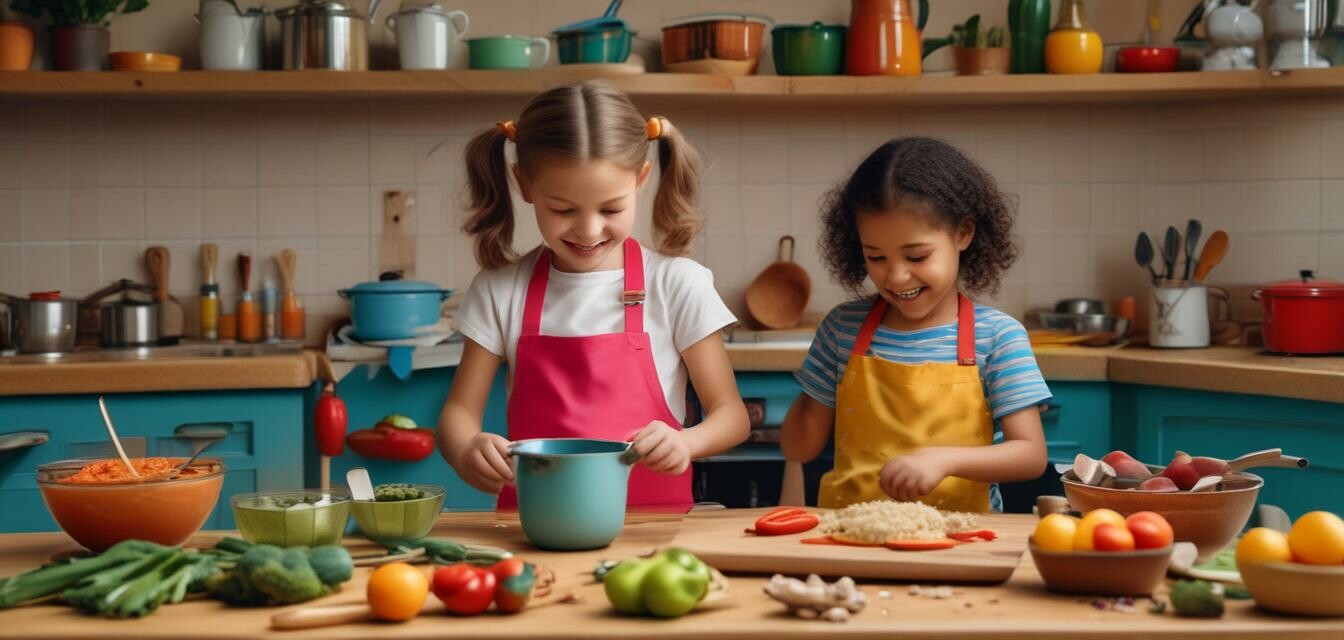
Tips for Cooking with Kids
Key Takeaways
- Involve kids in age-appropriate cooking tasks to build their confidence.
- Make cooking fun with games and challenges.
- Encourage creativity by letting children choose ingredients and recipes.
- Use cooking as a learning opportunity, discussing measurements and healthy eating.
Cooking with kids is not only a fun activity but also a fantastic way to foster a love for culinary arts in young ones. Engaging them in the kitchen can help build their confidence and skills while creating lasting memories. Here are some engaging ideas and techniques for involving children in cooking.
Benefits of Cooking with Kids
Cooking together offers many benefits including:
- Enhancing fine motor skills through chopping, stirring, and measuring.
- Promoting teamwork and communication as they follow recipes together.
- Encouraging healthy eating habits by involving kids in meal preparation.
Age-Appropriate Cooking Tasks
Assigning age-appropriate tasks can make cooking with kids enjoyable and safe. Here's a quick guide:
| Age Group | Cooking Tasks |
|---|---|
| 2-4 years | Washing fruits and vegetables, mixing batter, and tearing herbs. |
| 5-7 years | Measuring ingredients, spreading butter or jam, and assembling sandwiches. |
| 8-12 years | Chopping soft ingredients, boiling pasta, and following simple recipes. |
| 12+ years | Grilling, baking, and experimenting with new recipes. |
Make Cooking Fun
To keep the cooking process enjoyable for kids, consider these engaging ideas:
- Choose fun and colorful ingredients.
- Turn cooking into a game, such as a timed cooking challenge.
- Encourage children to create their own recipes by mixing and matching ingredients.
- Host themed cooking nights (Italian night, taco night, etc.) for added excitement.
Learning Opportunities in Cooking
Cooking provides an excellent platform for children to learn. Incorporate these educational elements:
- Measurements: Teach basic math skills by measuring ingredients.
- Science: Discuss how heat changes food and the cooking process.
- Reading: Encourage reading by having children read recipes out loud.
- Nutrition: Discuss the nutritional values of the foods they are using.
Safety First
Always prioritize safety when cooking with kids. Here are tips to keep in mind:
- Use kid-safe kitchen tools, such as plastic knives for younger children.
- Teach proper handwashing techniques to avoid contamination.
- Supervise children closely, especially around hot surfaces or sharp objects.
- Have first-aid supplies on hand for minor accidents.
Beginner Tips for Cooking with Kids
- Start with simple recipes that require minimal ingredients.
- Let kids decorate the final dish to add a personal touch.
- Be patient and prepare for some mess—cleaning is part of the fun too!
Pros
- Enhances children’s understanding of healthy eating.
- Builds family bonding and teamwork skills.
- Encourages creativity through meal preparation.
Cons
- Can be time-consuming with younger kids involved.
- Possible mess in the kitchen.
- Need for supervision, especially around heat and sharp objects.
Conclusion
Cooking with kids is an enriching experience that benefits not just their culinary skills but also fosters family connections and a deeper understanding of food. By involving children in cooking, you cultivate their love for the kitchen while teaching valuable life skills. For more helpful tips and techniques, check out our Cooking Tips & Techniques category!